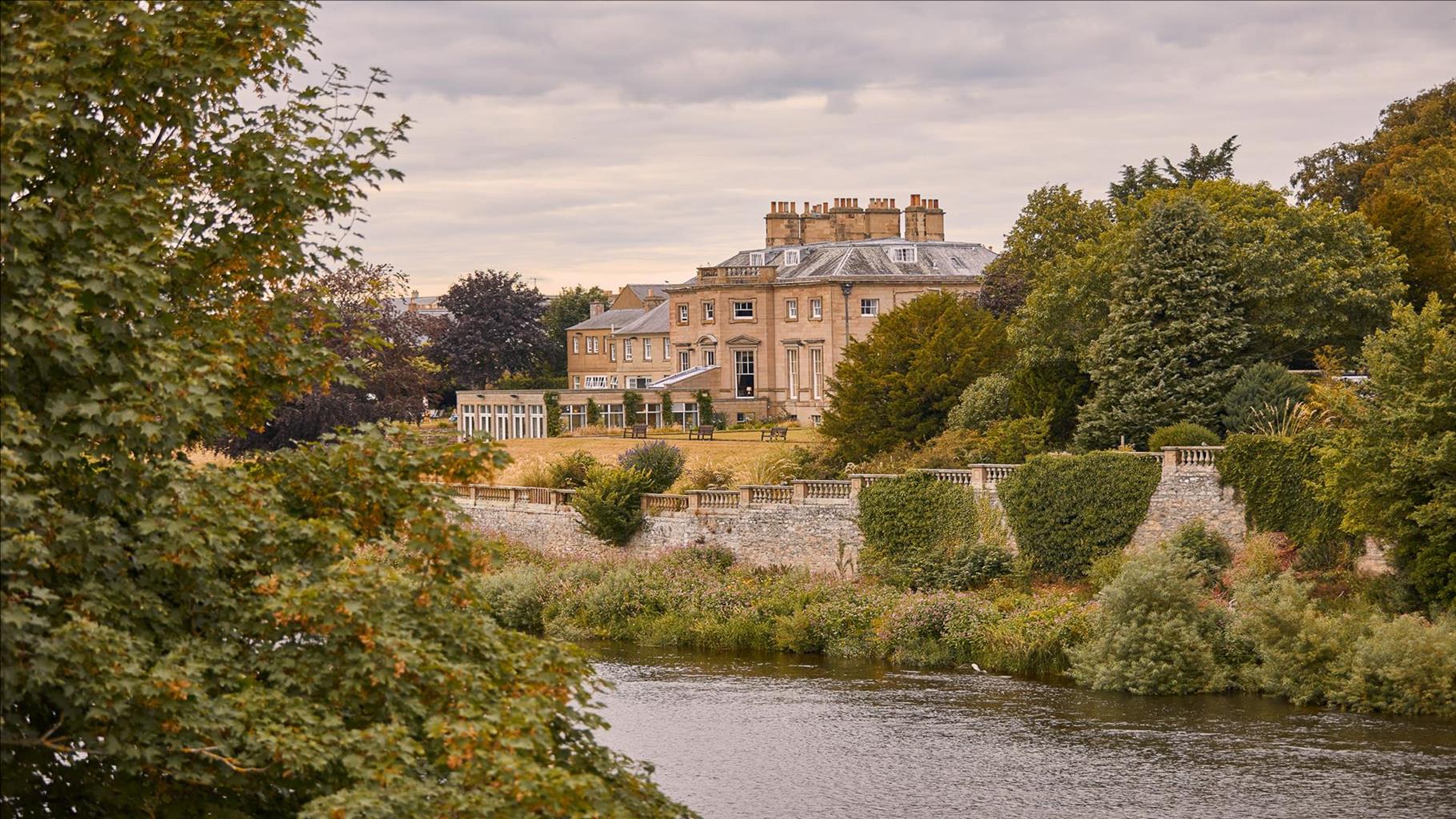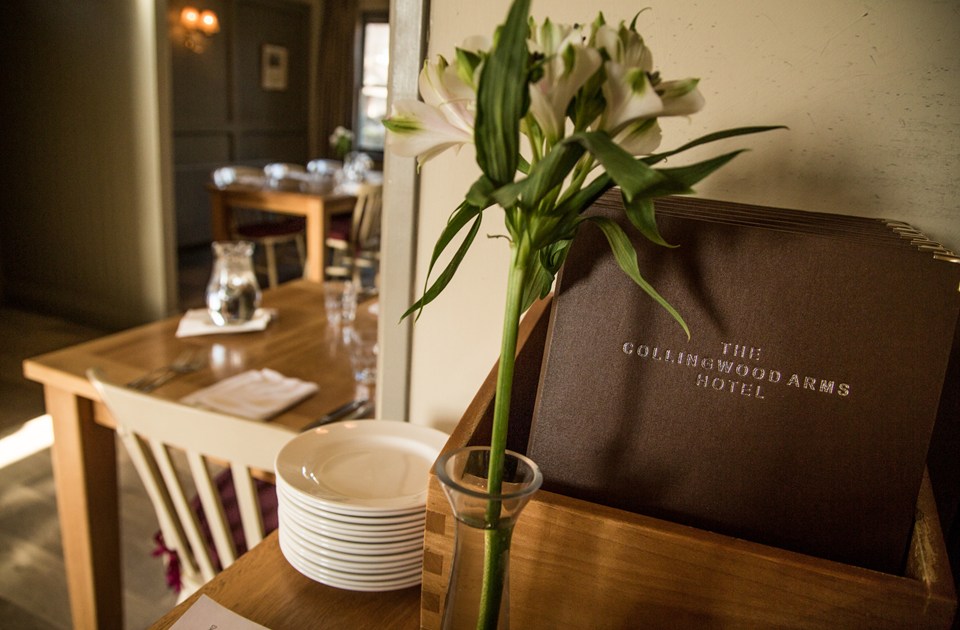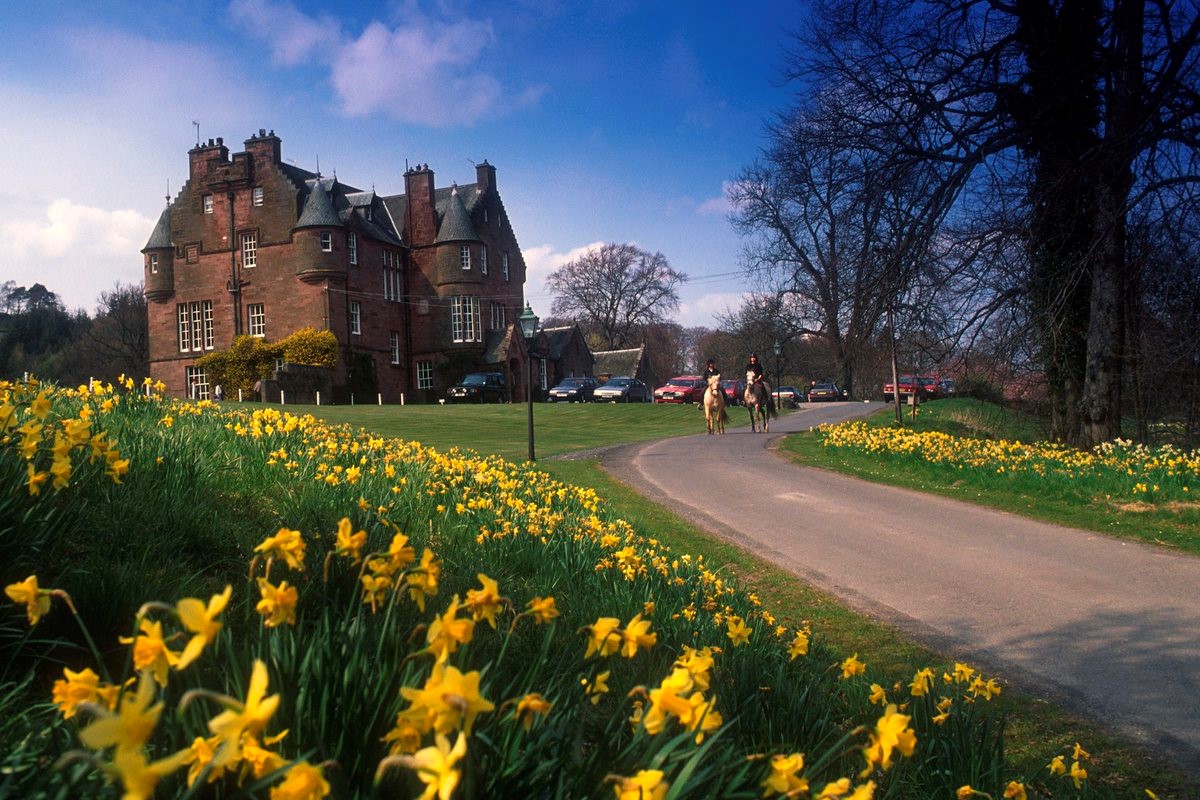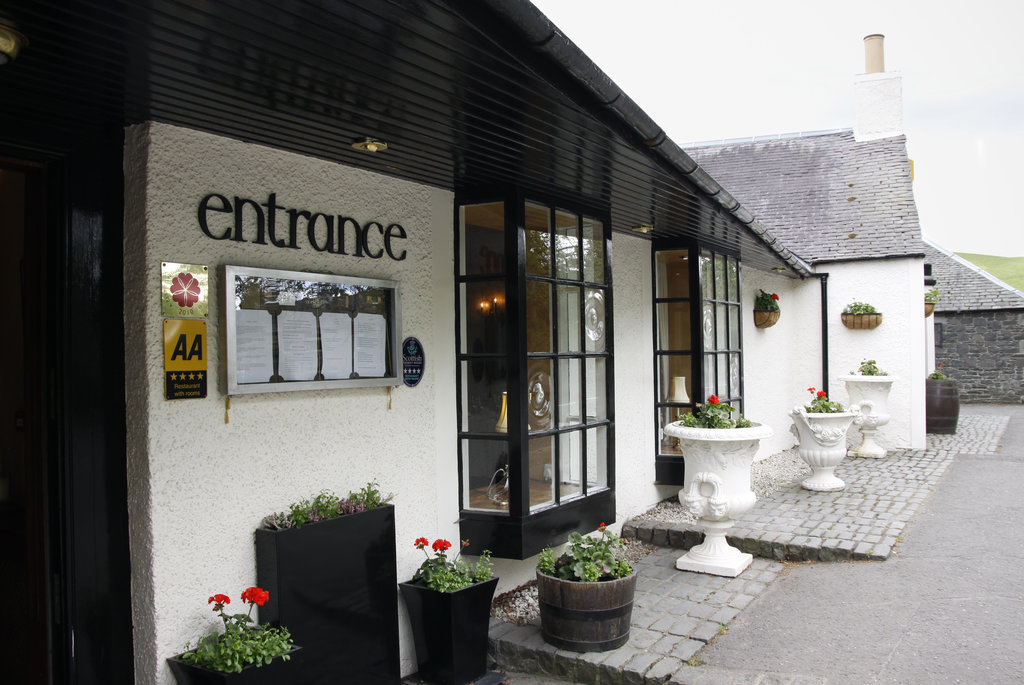Kingsknowes Hotel is an imposing turreted mansion, this hotel lies in attractive gardens on the…
Sir Walter Scott at Dryburgh Abbey

Walk in the footsteps of one of Scotland's greatest literary figures.
5 miles (8kms)
About the walk
Walk anywhere in the Scottish Borders and you are probably following in the footsteps of one of Scotland's most celebrated literary figures – Sir Walter Scott (1771–1832). He travelled widely here, writing marvellous books and poetry that would be described as bestsellers if they were published today. Yet, while everyone has certainly heard of Sir Walter Scott, hardly anyone now reads his books.
Wavering over Waverley
The reason for this is almost certainly the somewhat impenetrable nature of the language he uses – impenetrable to non-Scots, anyway. Full of enthusiasm, people tend to pick up a copy of Waverley (1814), a romantic tale of the Jacobite rebellion, then put it down in defeat after page 10. But those who persist and learn to unravel the old Scots dialect discover tales that were strongly influenced by the ballads, folklore and history of the borderlands – tales that would have died out otherwise.
From polio to poetry
Scott was the son of an Edinburgh lawyer but spent a lot of time in the Borders as a child while recuperating from polio. He was fascinated by the stories and ballads he heard and, when he grew older, began to collect material that he later turned into romantic poetry. He was greatly influenced by Robert Burns and became friends with James Hogg, the Ettrick Shepherd.
Scott became a barrister in 1792, but spent his spare time writing poetry. He was appointed Sheriff-Depute of Selkirk in 1799 and in 1811 he moved to Abbotsford, near Melrose, where he lived for the rest of his life. He turned to novel writing, declaring that 'Byron beat me' at poetry. It was a decision that was to make Scott's fortune – but it was also, ultimately, to cost him his health.
After the publication of Waverley, he produced several more historical novels, including Rob Roy (1817), The Heart of Midlothian (1818) and Ivanhoe (1819). Scott's novels revived interest in Scottish culture, at a time when it had been in danger of disappearing. In 1818 he rediscovered the Honours of Scotland – a crown, sword and sceptre – which had been hidden in Edinburgh Castle from the time of Charles II. As a result, Scott was invited to make the arrangements for George IV's visit to Scotland in 1822. The German-born King entered wholeheartedly into the spirit of the visit and delighted the crowds by wearing a kilt teamed with some natty pink tights.
Scott should have been able to live in relative wealth and comfort, but in 1825 his publishing house collapsed and he was left with enormous debts. His wife died the same year. Scott worked furiously to pay off his debts, and succeeded, but his health suffered and in 1832 he died at Abbotsford. He is buried in the ruins of Dryburgh Abbey.
Walk directions
From the car park at the abbey, walk back to join the road. Pass the entrance to the Dryburgh Abbey Hotel and then walk down the dead-end lane in front of you. You'll soon see the river. At the end of the road, continue along a footpath and bypass before crossing the bridge over the River Tweed.
Turn left immediately and join St Cuthbert's Way. This waymarked trail now leads along the riverbanks. At some points there are steps, tiny footbridges and patches of boardwalk to assist you. Continue to follow this trail which eventually takes you past two small islands in the river, where it then leads away from the riverbank.
Follow the trail onto a tarmac track, then left. At the main road in St Boswells go left again and continue to follow the trail signs, passing a post office and later Scott's View chippy on your left. After house No. 101, turn left down Braeheads Road and then go to your right along a tarmac track at the end.
Follow this, then turn left and walk past the golf clubhouse. Continue walking for a few paces, then turn right and follow St Cuthbert's Way as it hugs the golf course. Continue by the golf course until the track eventually brings you back down to the riverbank. Walk past the weir and up to the bridge.
Go up the steps and cross the bridge (take care, there is no footway), then turn sharp left and walk towards the cottages. Before the cottages, go left over the footbridge, then turn right along the riverbank to walk in front of them. At the weir, take the steps that run up to the right, nip over the stile and into a field.
Go left now and keep to the track through woodland down to the riverbank, following the waymarked trail.
Follow the river, keeping an eye out for fish leaping up to feed from the water's surface. Cross a stile, then pass a greenhouse on your left. Climb another stile here, turn right, walk past the toilets and, at the house ahead, turn left and walk back into the car park.
Additional information
Firm woodland and riverside tracks; several stiles
Historic abbey and riverbanks
Keep on lead on Mertoun Estate and by golf course
OS Explorer 338 Galashiels, Selkirk & Melrose
Dryburgh Abbey car park
At car park
WALKING IN SAFETY
Read our tips to look after yourself and the environment when following this walk.
Find out more
Also in the area
About the area
Discover Scottish Borders
Southern Scotland is often referred to as the Lowlands, to distinguish it from the mountainous grandeur of the North-West Highlands. But don’t be fooled by the description. In places, the landscape can be anything but flat. This is a different Scotland to the rest of the country in terms of character and identity but, in terms of scenery, no less spectacular and just as fascinating.
Jedburgh, despite its turbulent history, is a peaceful country town beside the serpentine Jed Water, with only the abbey walls hinting at its former grandeur. One of the most elegant of the Border towns is Kelso, with its wide cobbled square at its heart. A poignant fragment is all that remains of Kelso Abbey, once the largest of the Border abbeys, destroyed by the English in 1545.
Like most towns and villages in the area, Melrose developed on the back of the tweed and knitwear industry, which brought wealth to the Scottish Borders, utilising the distinctive, Roman-nosed Cheviot Hill sheep and the availability of water power for the looms. Head to Peebles to shop for locally made knitwear and enjoy the peace and fresh air, where walks, trails and cycleways lead into the wooded countryside.
Nearby stays
Restaurants and Pubs
Nearby experiences
Recommended things to do
Why choose Rated Trips?
Your trusted guide to rated places across the UK
The best coverage
Discover more than 15,000 professionally rated places to stay, eat and visit from across the UK and Ireland.
Quality assured
Choose a place to stay safe in the knowledge that it has been expertly assessed by trained assessors.
Plan your next trip
Search by location or the type of place you're visiting to find your next ideal holiday experience.
Travel inspiration
Read our articles, city guides and recommended things to do for inspiration. We're here to help you explore the UK.















